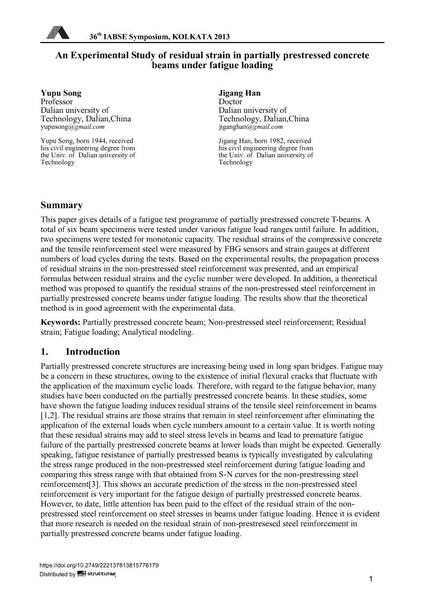An Experimental Study of residual strain in partially prestressed concrete beams under fatigue loading

|
|
|||||||||||
Bibliografische Angaben
| Autor(en): |
Yupu Song
Jigang Han |
||||
|---|---|---|---|---|---|
| Medium: | Tagungsbeitrag | ||||
| Sprache(n): | Englisch | ||||
| Tagung: | IABSE Symposium: Long Span Bridges and Roofs - Development, Design and Implementation, Kolkata, India, 24-27 September 2013 | ||||
| Veröffentlicht in: | IABSE Symposium Kolkata 2013 | ||||
|
|||||
| Seite(n): | 1-8 | ||||
| Anzahl der Seiten (im PDF): | 8 | ||||
| Jahr: | 2013 | ||||
| DOI: | 10.2749/222137813815776179 | ||||
| Abstrakt: |
This paper gives details of a fatigue test programme of partially prestressed concrete T-beams. A total of six beam specimens were tested under various fatigue load ranges until failure. In addition, two specimens were tested for monotonic capacity. The residual strains of the compressive concrete and the tensile reinforcement steel were measured by FBG sensors and strain gauges at different numbers of load cycles during the tests. Based on the experimental results, the propagation process of residual strains in the non-prestressed steel reinforcement was presented, and an empirical formulas between residual strains and the cyclic number were developed. In addition, a theoretical method was proposed to quantify the residual strains of the non-prestressed steel reinforcement in partially prestressed concrete beams under fatigue loading. The results show that the theoretical method is in good agreement with the experimental data. |
||||
